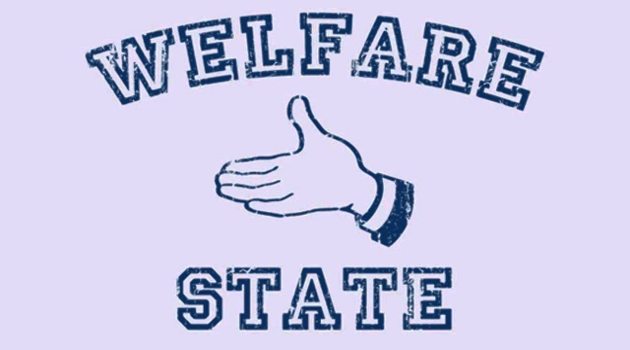In his blog “The non-relationship between welfare spending and poverty reduction in the western world” Dan Mitchell explains how the welfare state is counter-productive in reducing poverty. He makes many strong points, perhaps the best of which is that poverty was declining sharply in the western world before the welfare state kicked into high gear.
The non-relationship between the welfare state and poverty is one of the most damning pieces of evidence against economic redistribution. But it gets better – or worse, if you will. Our government has actually rigged its anti-poverty spending programs in such a way that they cannot eliminate poverty, no matter how much money we spend.
Prior to 1964 the U.S. government used a so-called absolute poverty definition: a person or a family was defined as living in poverty if its standard of living was below an absolute amount. The threshold was not fixed over time – it changed with the general perception of what was considered a life in poverty – but there was no formal tie between the poverty threshold and the standard of living among the rest of the population.
As I explain in my book The Rise of Big Government: How Egalitarianism Conquered America:
Historically, the United States relied on an absolute poverty concept, which defines poverty independently of the general standard of living in a society. Prior to the invention of the relative poverty concept, federal welfare programs had been specifically designed to relieve absolute poverty. While those programs expanded radically in the wake of the Great Depression, the purpose, and the definition of entitlements in the programs, were all intended to make an absolute level of poverty as palatable as possible.
Then the Lyndon Johnson administration introduced the relative poverty concept, which defines a person as poor if his income is of a certain percentage of median income. All of a sudden, the poverty threshold rises automatically when people in general make more money.
There are two absurdities with this definition. The first and most obvious one is that when the economy is doing well and median income rises, the poverty threshold will go up – and more people will be defined as poor. By the same token, in a recession with stagnant or even declining median income, the poverty threshold suddenly declines.
None of this makes sense, of course. In fact, it is counter-intuitive to how common sense says we should define poverty. Nevertheless, this is the definition our government uses, and it guides all the spending programs in our welfare state.
Which brings us to the second absurdity with a relative poverty concept. Since a poor person, by definition, lives on a percentage of median income, government spending cannot eliminate poverty. It is arithmetically impossible, unless government by law eliminates all income differences.
In other words, we have a welfare state that spends hundreds of billions of dollars every year to “fight poverty”, while at the same time we define those who are poor in such a way that the “fight” to end poverty can never be successful.
If this all seems illogical, it is because – yes – it is illogical. However, to ask for logic behind government spending is to ask for the impossible. The only rational explanation for this construct is, as I suggest in my book, that the welfare state born from the War on Poverty is actually designed to gradually reduce, and eventually eliminate income differences. It is, in short, a redistributive behemoth aimed at transforming America into a Scandinavian-style egalitarian welfare state.

